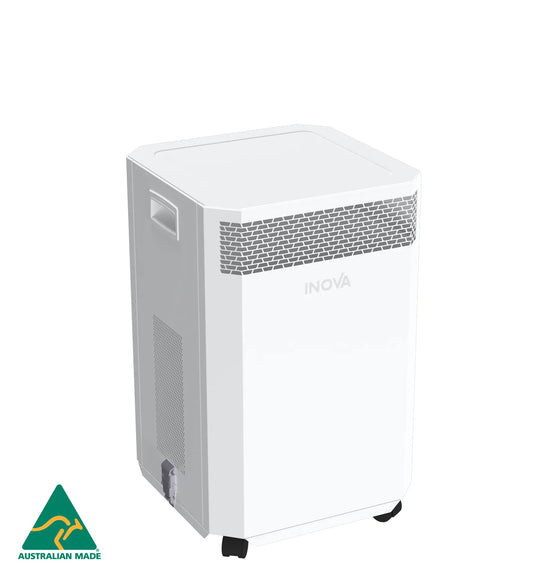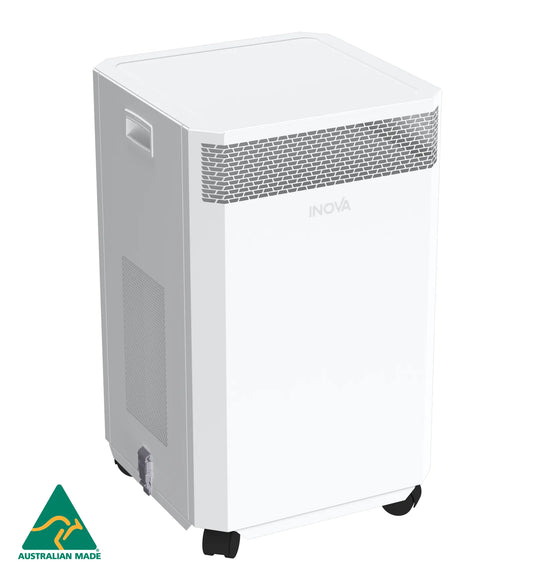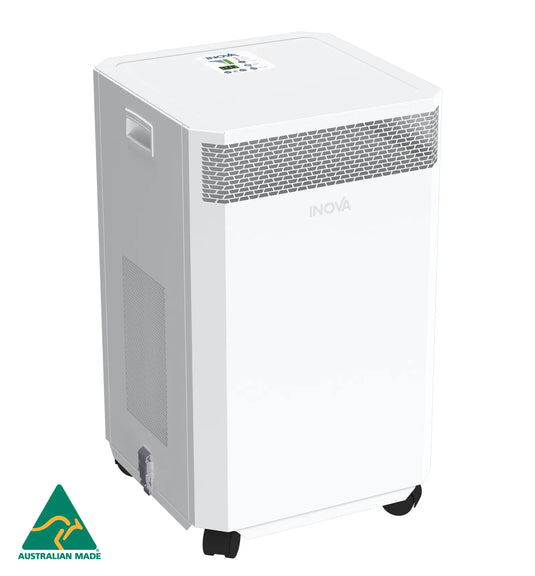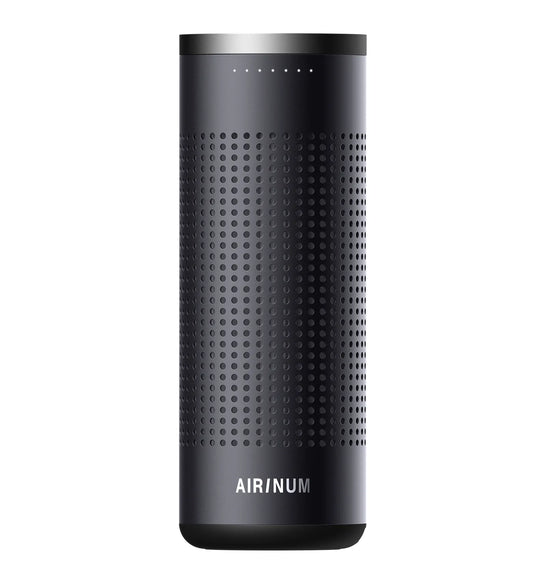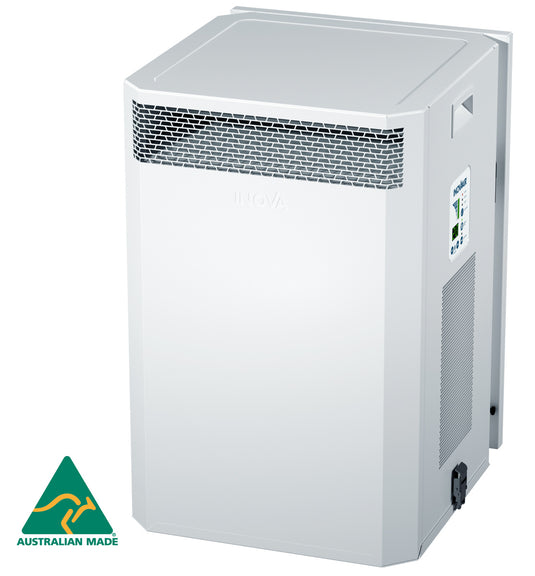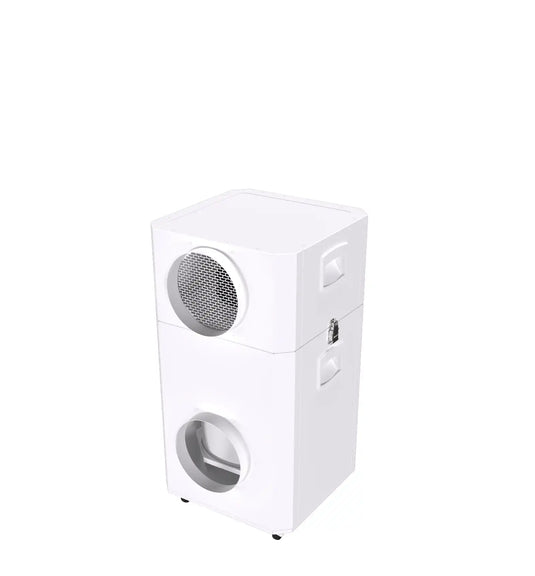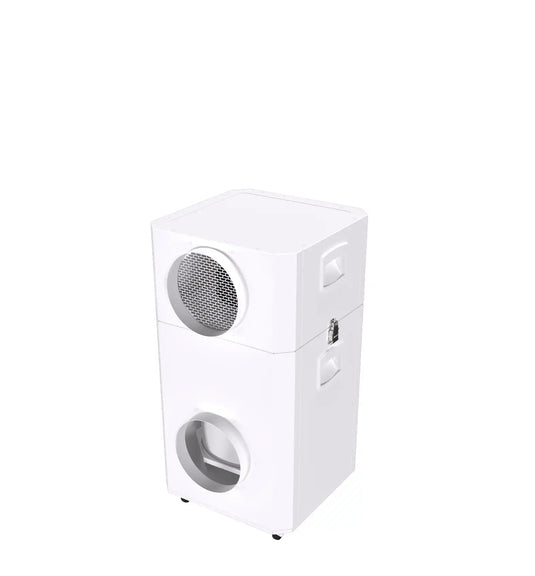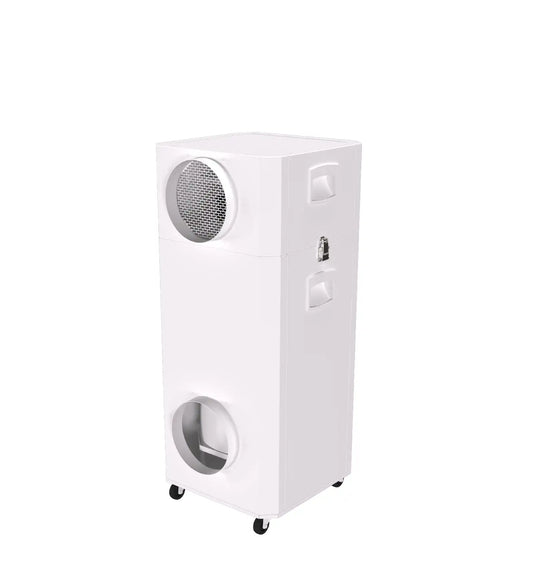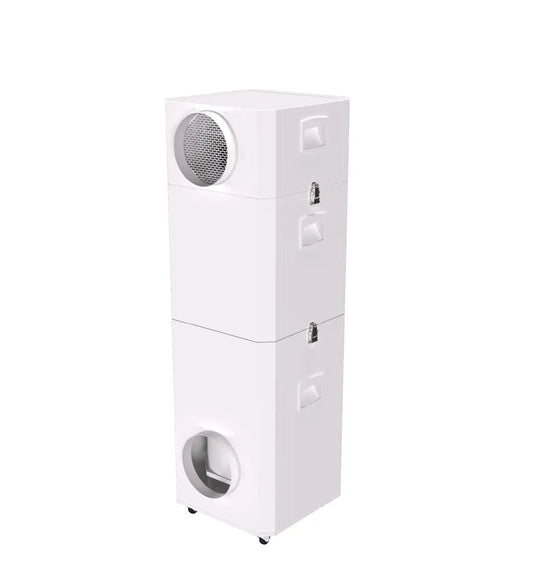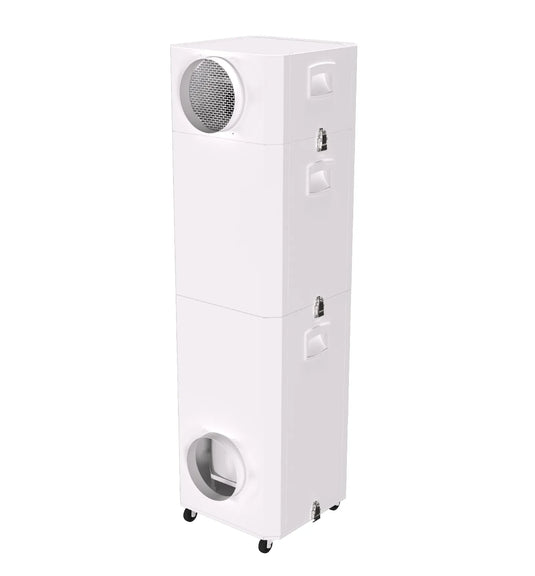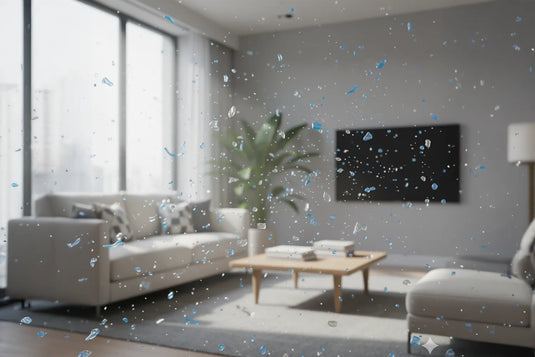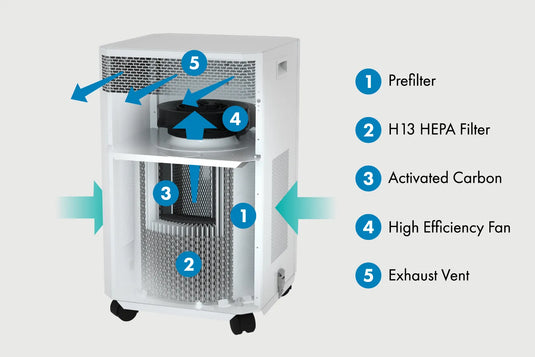Air Pollution Found to Increase the Mortality Rates of COVID-19.

A recent study conducted by researchers from the Department of Biostatistics at the Harvard T. H. Chan School of Public Health in Boston, MA, USA, has shown evidence linking air pollution levels to the death rates of COVID-19.

The study examined more than 3,000 counties across the USA and was adjusted for “population size, hospital beds, number of people tested for COVID-19, weather, and socioeconomic and behavioural variables such as obesity and smoking” to gain a more accurate result.7 Through this process, it was found that even a small increase in long-term exposure to PM2.5 could lead to an increase in COVID-19 mortality. In fact, the researchers determined that someone living in an area of high particulate pollution is 15% more likely to die from COVID-19 than someone living in a slightly less polluted area.2 The scientists made it clear there is more research that needs to be done before a conclusive result can be confirmed. This research will only come with more time and data on individuals effected by both air pollution and COVID-19.
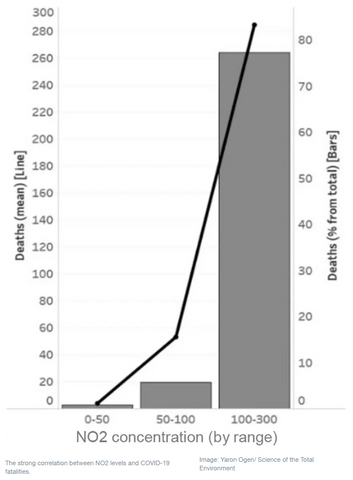
The graph above by Yaron Ogen from the Department of Remote Sensing and Cartography shows the correlation between Nitrogen Dioxide (NO2), a pollutant typically generated from motor vehicle exhaust emissions with elevated levels are commonly recorded near main roads and COVID-19 deaths. Scientists have also detected COVID-19 aerosols on particles of air pollution, meaning it could increase the number of people infected. Professor Jonathan Reid at Bristol University in the UK who researches the airborne transmission of the virus stated, “It is perhaps not surprising that while suspended in air, the small droplets could combine with background urban particles and be carried around.”14

How does air pollution worsen the effects of the virus? Air pollution weakens your immune system. When Italy was hit hard by COVID-19, the areas most affected were Lombardy and Emilia Romagna with a lethality rate of 12% compared to the 4.5% of the rest of Italy. Researchers at the Royal Netherlands Meteorological Institute through the data from the Ozone Monitoring Instrument on NASA’s Aura Satellite revealed that northern Italy, where the 2 cities mentioned above are located, is one of Europe’s most polluted areas in terms of smog and air pollution.12
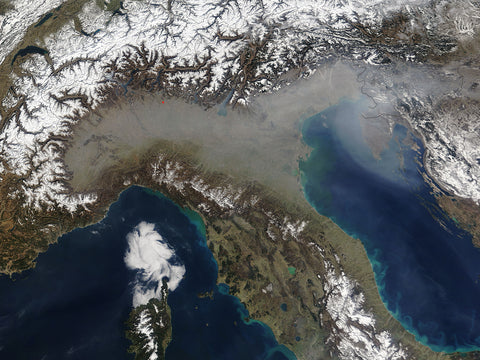
"Haze in Northern Italy" from NASA Visible Earth 15
Air pollutants have been found to facilitate the potential spread of the infection via ultra-fine particles. Detailed information on these aerosols can be found in our earlier blog, "New Evidence Supports Airborne Spread of Coronavirus (COVID-19)." Areas with high PM pollution levels would potentially help facilitate the spread of the virus as these aerosols can attach to particles and travel further, thus increasing the area in which the virus can spread and cause infection. Researchers performed a study at 2 hospitals in Wuhan, China, they detected genetic material, RNA, of COVID-19 in sampled aerosols.13 One of the hospitals held patients with severe illnesses, and the other was a converted sports stadium for patients with mild symptoms.13
The Potential Benefits of Breathing Clean, Purified Air
While common for many to use air purifiers to lower dust and allergens in the air, more evidence is emerging on just how important it is to lower one's exposure to harmful particle matter, including PM2.5 and smaller ultra-fine particles.
Using a medical-grade air purifier can also assist with filtering bacteria & viruses from the air, including COVID-19. The efficiency of HEPA filters has been well documented on sub-micron particles which were supported by the NASA study.
As mentioned in our previous post discussing safety measures for shopping centres, "HEPA Filters Required in New York Shopping Centres," HEPA filters are now required by government, environment, and health agencies in more and more settings both in the United States and Australia. Recently InovaAir supplied hospitals in NSW and VIC hospitals with HEPA air purifier systems for use in intensive care.
To learn more about the aerosol spread of the virus please read our blog about new evidence supporting the airbourne spread of COVID 19
To learn more about how governments are implementing HEPA filters please read our blog about HEPA Filters being required in New York shopping centres.
If you are in need of a medical-grade air purifier for small spaces we recommend the AirClean E8 Air Purifier.
For higher capacity applications, please check out the AirClean E20 and AirClean DE20 series Air Purifiers
References
2https://news.stanford.edu/2020/06/30/links-covid-19-air-pollution/
4https://www.cnn.com/2020/04/22/world/air-pollution-reduction-cities-coronavirus-intl-hnk/index.html
6https://www.sciencedirect.com/science/article/pii/S0048969720321215
8https://projects.iq.harvard.edu/covid-pm
9https://www.bbc.com/future/article/20200427-how-air-pollution-exacerbates-covid-19
12 https://www.sciencedirect.com/science/article/pii/S0269749120320601?via=ihub
13 https://www.medicalnewstoday.com/articles/tiny-airborne-particles-may-carry-the-new-coronavirus
14 https://www.theguardian.com/environment/2020/apr/24/coronavirus-detected-particles-air-pollution
15 https://visibleearth.nasa.gov/images/72766/haze-in-northern-italy

